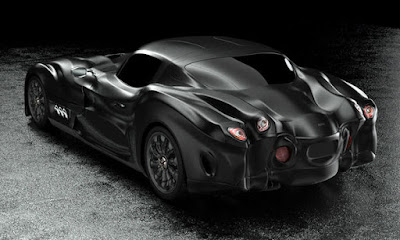SuperBEAST Of the many premium car manufacturers in the world, there are several brands that sound very prestige. For example, Ferrari, Lamborghini, and McLaren, who are diligent in presenting premuim quality cars for world automotive enthusiasts to date. Recently, McLaren, one of the British premium automotive brands had launched a supercar that comes with a very cool design coupled with a performance above the average sports car ever.
 |
| McLaren Sabre is touted the McLaren's fastest non-hybrid two-seater model ever. (Picture from: http://bit.ly/2MLjRoP) |
 |
| McLaren Saber is a non-hybrid two-seater model specially designed by the McLaren's Special Operation (MSO division). (Picture from: http://bit.ly/2MLjRoP) |
And now it's finally revealed that the car in question is a high-performance car recently launched by the Woking-based manufacturer and named the McLaren Sabre. As quoted from Autocar, the supercar was specially designed by McLaren's Special Operations (MSO) division and only made 15 units. Beside that the supercar was also claimed to be able to reach speeds of 218 mph, making it the McLaren's fastest non-hybrid two-seater model ever produced to date.
 |
| McLaren Sabre features extensive body modifications made possible by homologation requirements. (Picture from: http://bit.ly/2MLjRoP) |
By design, the supercar does come with a very unique design by applying swing-up doors and a huge dorsal fin connected to the rear wing. It is suspected that the customer who commisioned it also had a hand in adjusting the dynamics of the car to suit their needs during the prototype's test run in early 2020.
 |
| McLaren Sabre has a very unique design by applying swing-up doors and a huge dorsal fin connected to the rear wing. (Picture from: http://bit.ly/2MLjRoP) |
 |
| McLaren Sabre uses a 4.0 liter twin-turbo V8 McLaren engine which is believed to be capable of producing up to 824 bhp of power and a torque of 590 lb.ft. (Picture from: http://bit.ly/2MLjRoP) |
The McLaren Sabre features extensive body modifications made possible by homologation requirements. And the result is a McLaren Sabre Aero package which is said to be reaching "new limits" through the LMP1-style fins that sit in the center of the roof, coupled with a giant rear diffuser and a distinctive three-slat wing.
An example of the first McLaren Sabre model has been shipped for an undisclosed price, and is estimated to be in the seven digits of US dollar. While another 14 examples will be coming to 14 other customers in the next few months of 2021. *** [EKA | FROM VARIOUS SOURCES | AUTOCAR | CARSCOOPS | ]
Note: This blog can be accessed via your smart phone.














































